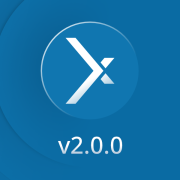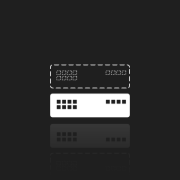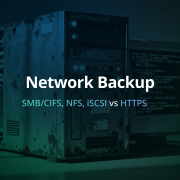
What Is the Grandfather-Father-Son Backup Scheme and How Does It Work?
There is this unattainable dream in cybersecurity to keep all of your backup copies forever. Unfortunately, for many organizations, such a task would be simply impossible to execute. Keeping backups requires storage space, which is expensive and runs out quite quickly.
As a way to solve the problem of consistent data protection, security professionals advise using backup schemes like FIFO (First-In-First-Out) or GFS (Grandfather-Father-Son). In this article, we’ll take a closer look at the most popular backup scheme—Grandfather-Father-Son.
Read on to find out:
-
What does the GFS backup scheme mean and how does it work?
-
Why is Grandfather-Father-Son the right choice for your data protection?
-
Are there any problems with using the GFS backup scheme?
Why Do You Need a Backup Rotation Scheme?
What’s the goal of using the GFS backup scheme, or any backup scheme in general?
It’s quite straightforward: to optimize the way you store your backups so that you can store as many copies as possible, and at the same time keep the continuity of security of your data intact.
You need to find a compromise between being able to protect all of your data and protecting your organization in general. This is where the GFS scheme shines.
What Is the GFS Backup Scheme?
The first thing you need to know is what the GFS stands for, and what part is responsible for which type of copy.
The GFS stands for:
- G – Grandfather—a full copy of your data
- F – Father—a differential copy of your data
- S – Son—an incremental copy of your data
The GFS backup rotation is a structured backup approach that manages daily, weekly, and monthly backups, organizing backup cycles to ensure reliable data recovery and long-term data retention.
Why Should You Use the Grandfather-Father-Son Backup Scheme?
The purpose of the Grandfather-Father-Son scheme is to provide a systematic backup approach that categorizes backup data into different levels for efficient management. The GFS backup method and GFS backup strategy deliver comprehensive data protection, supporting regulatory requirements and business needs by ensuring that critical data is safeguarded and easily recoverable.
The GFS rotation scheme and backup cycles help manage backup data, data retention, and retention rules by organizing backups into daily, weekly, and monthly sets. This structure ensures that data is retained according to specific retention rules, optimizing recovery options and compliance.
How Does the GFS Backup Work?
When optimizing storage, the Grandfather-Father-Son strategy balances retention policy and storage requirements, helping organizations control storage costs while maintaining data availability and meeting regulatory requirements.
One of our older posts describes in detail what types of backup—forever incremental, synthetic, reverse incremental—are available to the user.
Grandfather—The Full Copy
Grandfather copy is a full backup copy. It is the oldest one and contains the most amount of data. By default, it is performed once a month. This monthly backup, also known as the Grandfather backup, is a key part of long-term data retention within the Grandfather-Father-Son (GFS) backup strategy.
Usually, a single version is kept for 12 months ahead, and these monthly backups—referred to as monthly Grandfather backups—are essential for extended archival and compliance, especially when combined with annual backups for even longer-term data preservation. For disaster recovery and enhanced data security, it is important to store Grandfather backups in off-site storage or an off-site location. You can keep copies for as long as you wish, all you need is available storage space.
Father—The Differential Copy
The Father copy is a differential copy from the Grandfather’s full one, and other Father copies. It takes all the changes that happened between the creation of those two. By default, it is performed once a week, usually at the end of it. These are also known as weekly backups or Father backups, serving as an intermediate recovery point in the backup rotation. The most common approach is to keep them for one month—but of course, you can keep them much longer.
Son—The Incremental Copy
The Son copy is an incremental copy from the Father differential one or other Son copies. By default it is performed once a day, so by that, it is also (usually) the smallest one of them. These are also known as daily backups or Son backups, capturing recent data and data changes to ensure up-to-date recovery points. Incremental backups like the Son backup focus on storing only the changes since the last backup, making them efficient for storage and backup time.
The most recent backup in this sequence is crucial for restoring a recent backup and minimizing data loss, as it provides the most current recovery option. You can decide for how long you want to keep those copies, but usually, they are kept for a week or two. Because if you are looking to restore data from like 3 weeks ago, you have father copies available.
What Makes Grandfather-Father-Son a Complete Backup Policy?
Having those three types of backup connected in one scheme allows admins to save many backup copies while maintaining a high level of data protection. By saving storage space, admins can also keep backup copies for a much longer retention period. Managing older backups and deleting the oldest backup as part of the rotation helps optimize storage usage and makes the most of available storage resources.
Keep in mind that to use the full potential of the Grandfather-Father-Son backup scheme you need to keep your backups on a very strict schedule. You need to create copies every month, every week, and every day if you want to be fully protected. Organizing full backups and backup media within the GFS scheme streamlines backup work and ensures efficient management of recovery points.
Only with that strict schedule comes great data protection. Moreover, this way of creating copies allows for a very quick recovery in case of any disaster. The GFS scheme helps reduce recovery time and enables you to recover data efficiently. In the worst-case scenario, you only need 8 copies to fully restore your data. 1 full copy—the Grandfather, 1 differential copy—the Father, and 6 incremental copies—the Sons.
What Are the Challenges with the GFS Backup Scheme?
While the Grandfather-Father-Son backup scheme is a great solution for the long-term retention of your copies, it comes with some limitations, too, especially regarding data security and protection against risks such as hardware failure. Let’s discuss this in detail.
Let’s assume that we use the GFS backup scheme to rotate our copies. We create full copies once a month and keep them for 12 months. We create differential copies, once a week, and keep them for 4 weeks. And we create incremental copies, once a day, and keep them for 7 days. Differential backups can serve as an alternative or supplement to incremental backups, providing more restore points and enhancing data security. Additionally, synthetic backups can be used to efficiently combine incremental backups into a full backup, improving backup efficiency and recovery flexibility within the GFS rotation policy.
So, if we put the backups available for recovery on the calendar, it will look something like this: we create a file on Monday in October, then delete it on Wednesday, in the long-term this file is lost, and we’re unable to recover it.
This highlights the importance of layered protection, version control, and robust backup strategies to ensure data security and minimize the risk of data loss due to events like hardware failure.
How Does the Grandfather-Father-Son Backup Work with Xopero ONE?
Let’s take a look at how you can set up the GFS backup scheme using Xopero ONE.
Xopero ONE allows users to flexibly set up every level of copies, whether they want to create backup every year, every two months, or even more often. It fully supports the GFS backup system, enabling hierarchical, multi-tiered data retention with daily, weekly, and monthly backups—Sons, Fathers, and Grandfathers.
Xopero ONE integrates the GFS backup scheme into its platform, supporting cloud-native applications, containerized, and distributed architectures, as well as ensuring consistent backup protocols with automated management in cloud environments. Users can choose the backup approach that best fits their needs, leveraging structured systems like the Grandfather-Father-Son backup rotation.
They can adjust how often, and at what time the copies should be created, and for how long they should be retained.
Final Thoughts on the Grandfather-Father-Son Backup Scheme
The GFS backup scheme is a great solution for keeping your organization protected on a very high level, additionally offering smart storage management and long-term retention. Both the Grandfather-Father-Son and Father-Son backup strategies provide comprehensive data protection by creating multiple recovery points through structured, periodic backups. These methods ensure reliable, organized data management and scalable storage, which is essential for business continuity.
It is also important to consider regulatory compliance in backup strategies, since adhering to industry-specific guidelines for data privacy and cybersecurity is critical for organizations. However, it comes with the cost that the older the copies are, the less granular the recovery process becomes. In this case, users need to choose which is more important: better long-term storage management or the full protection of data.
Let’s not forget that the use of the GFS—or FIFO—backup scheme provided by Xopero ONE presents you with the tools to utilize the full potential of those rotation schemes, giving you full control over retention, schedule, storage, and many more!







